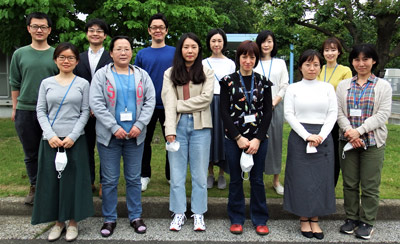Scientists are closer to finding ways to convert carbon dioxide in the atmosphere into industrially useful chemicals thanks to a RIKEN study that looked at how nature converts carbon dioxide into more complex organic compounds-one of the processes underpinning the origin of life1.
Finding an energetically efficient means to convert carbon dioxide gas into useful compounds is highly attractive for reducing the emission of the greenhouse gas in an economically viable way. In nature, carbon dioxide is converted into carbon monoxide and then into more complex organic compounds through reactions that are most likely linked to the origin of life on Earth.
These reactions can follow different pathways, but a particularly efficient one employs the enzyme carbon monoxide dehydrogenase (CODH), which helps reduce the energetic costs associated with the first step of the reaction: the reduction of carbon dioxide into carbon monoxide. Understanding the catalytic mechanism of the CODH enzyme could thus pave the way to environmentally friendly technological applications as well as offer important insights into the origin of life on our planet.
Every enzyme has a specific active site where the relevant reactions occur. Now, Ryuhei Nakamura of the RIKEN Center for Sustainable Resource Science (CSRS) and colleagues have proposed that a specific atom, nickel, is key to the reaction mechanism that take places at the active site of the CODH enzyme.
 Ryuhei Nakamura (back row, third from the left), Ji-Eun Lee (front row, third from the left), Hideshi Ooka (back row, second from the left), and their co-workers have found the molecular mechanism behind nickel-enhanced CO2 reduction into CO and more complex organic compounds. © 2021 RIKEN
Ryuhei Nakamura (back row, third from the left), Ji-Eun Lee (front row, third from the left), Hideshi Ooka (back row, second from the left), and their co-workers have found the molecular mechanism behind nickel-enhanced CO2 reduction into CO and more complex organic compounds. © 2021 RIKEN
"CODH is a rare enzyme that uses a nickel-iron sulfide active site instead of the more common iron sulfide clusters," explains Hideshi Ooka, co-author of the article. "While our group and others have already reported that adding nickel into iron sulfides improves the efficiency for carbon dioxide reduction, the reason why nickel is important wasn't known due to the lack of in situ spectroscopic studies," says Ji-Eun Lee, also of CSRS.
The team used three inorganic analogues of the CODH active site-one featuring iron and sulfur and two featuring nickel, iron and sulfur-and followed the carbon dioxide reduction on the three analogues using infrared spectroscopy while varying the applied electric potential.
Carbon dioxide reduction occurred only in the presence of nickel, which binds to carbon while iron binds to oxygen. As the potential was increased, the iron sulfur and nickel cluster catalyzed the further reduction of carbon monoxide into the formyl group, which was then converted into methane and ethane.
Through their work, Nakamura and co-workers have provided a molecular-level understanding behind nickel-enhanced reduction of carbon dioxide, offering important insights for the development of biomimetic catalysts.
"Our results also show that carbon dioxide reduction is possible on the surface of minerals, suggesting that nickel-iron sulfides may have contributed toward prebiotic fixation of carbon dioxide," says Nakamura.






